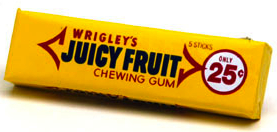Lesson: Cracking the (Bar) Code
(Lesson courtesy of Tryengineering. Click HERE for PDF of the entire lesson)
Level: Grades 5 – 12
Time Required: One to two 45 minute sessions.
 This lesson for students in grades 5-12 explores how computerized barcoding has simplified distributing and pricing of products. Students learn about encoding and decoding, the barcoding system, and how a mathematical formula is embedded in barcoding to safeguard against errors. Students use websites to identify product barcodes, test codes from everyday products, and work as an “engineering team” to come up with the next generation of information embedding systems.
This lesson for students in grades 5-12 explores how computerized barcoding has simplified distributing and pricing of products. Students learn about encoding and decoding, the barcoding system, and how a mathematical formula is embedded in barcoding to safeguard against errors. Students use websites to identify product barcodes, test codes from everyday products, and work as an “engineering team” to come up with the next generation of information embedding systems.
Objectives
- Learn about encoding systems — specifically barcodes — and decoding technology.
- Learn about how barcodes interface with computer systems.
- Learn about how barcodes have improved distribution efficiency and pricing accuracy of manufactured products.
- Learn how the development of barcodes has impacted everyday life.
- Learn about teamwork and engineering problem solving in groups.
As a result of this activity, students should develop an understanding of computerized encoding and decoding systems (barcodes) as well as ways that engineering and technology make an impact on society. Students also learn about how computer coding systems have impacted everyday life, including distribution of products, management of inventory, and pricing at retail outlets and online websites. Topics examined include barcodes, and the impact of computerized scanning/pricing/inventory systems. Students work in teams to design an improved information embedding system, learn how the computer coding/decoding works, and solve underlying mathematical formulas to check barcodes.
Standards
Please see the pages from the pdf for the full list of standards, including National Science Education Standards Grades 3-12; Standards for Technological Literacy – All Ages; and Principles and Standards for School Mathematics
Background
The first item ever scanned using a barcode was a pack of Wrigley’s Juicy Fruit gum, purchased at a supermarket in Troy, Ohio, in 1974.
Back then, scanners were large, loud, and clumsy. Now they’re small, hand held, unobtrusive, quiet, and quick; they are used everywhere from stores and post offices to hospitals — and by researchers and engineers. The barcode has had a huge impact on retail, manufacturing systems, and distribution of products all over the world. Recently, bar codes have made possible advances in providing medicine instructions and in the accuracy of blood transfusions. Dry cleaners are applying barcodes to make sure that clothing is returned to the right customer, and banking system codes allow customers to “swipe and go” — purchasing gasoline, food, and even meals at restaurants.

Resources/Materials
- Internet Access (if possible)
One set of materials for each group of students:
- Barcodes from five different products
- Access to the Internet
Procedure
1. Show students the various Student Resource Sheets. These may be read in class or provided as reading material for the prior night’s homework. Students should also be directed to bring in several barcodes from food or other items from their homes.
2. Divide students into groups of 3-4 students; provide one set of materials per group.
3. Ask students to visit the Internet UPC Database (www.upcdatabase.com) and type in several barcodes to help identify the products. They can also be directed to search for and print out barcodes for items they would potentially like to buy.
4. Using the Student Worksheet, “Checking the Code,” students perform mathematical check on barcodes to determine accuracy and understanding of the numerical relationships of bar coding systems.
6. Using the Student Worksheet, “What’s Next,” students work in teams as “engineers” to develop a new coding system or way of embedding information in manufactured products.
7. Student then complete the last page of the Student Worksheet, addressing the impact of computer engineering and technology on society, and the issues involved.
8. If there is time, have each the students in each group present their vision for new coding systems and their views on societal impact of engineering to the class.
Assessment
Teachers can base their assessment of student involvement and understand upon the completed worksheets, presentations, and student participation in the class discussions.
Optional Writing Activities
Younger Students: Write an essay or a paragraph describing whether or not you think there were more errors in charging for items at a grocery store before or after the implementation of the computer scanned barcode system.
Older Students: Write an essay or a paragraph describing how running a grocery store would be different if there were no barcodes. Explain what it might have been like to conduct an inventory listing in 1960. How has computer engineering changed the shopping experience?
Provide students with additional exercises, using the Pupil resources from Centre for Innovation in Mathematics Teaching (CIMT), University of Plymouth, England.
Additional Resources
From The Centre for Innovation in Mathematics Teaching (CIMT), University of Plymouth, England:
- Another barcode lesson plus other codes and cipher lessons
- TryComputing.org from IEEE
- TryEngineering (www.tryengineering.org)
- American Mathematical Association: The Digital Revolution – Barcodes
(www.ams.org/featurecolumn/archive/barcodes1.html) - Internet UPC Database (www.upcdatabase.com)
- ITEEA Standards for Technological Literacy: Content for the Study of Technology
(www.iteaconnect.org/TAA) - NSTA National Science Education Standards (www.nsta.org/standards)
- NCTM Principles and Standards for School Mathematics (http://standards.nctm.org)
Recommended Reading
Revolution at the Checkout Counter : The Explosion of the Barcode (ISBN: 0674767209)
Code: The Hidden Language of Computer Hardware and Software, by Charles Petzold (ISBN: 0735611319)
Raising the Bar [Code] : The Value of Auto-ID Technology (ISBN: 0324300786)
Filed under: Grades 6-8, Grades 9-12, Grades K-5, Lesson Plans
Tags: Computer Programming, Computer Science, Math Lesson Plans, Mathematics








